
The Ladykirk and Norham Bridge connects Ladykirk in the Borders, Scotland, with Norham in Northumberland, England, across the River Tweed.
The Kelvin Aqueduct is a navigable aqueduct in Glasgow, Scotland, which carries the Forth and Clyde Canal over the River Kelvin.

Connel Bridge is a cantilever bridge that spans Loch Etive at Connel in Scotland. The bridge takes the A828 road across the narrowest part of the loch, at the Falls of Lora. It is a category B listed structure.
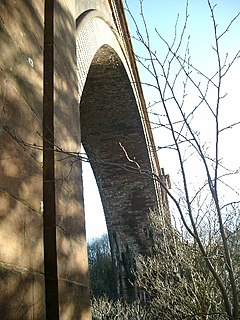
The Ballochmyle Viaduct is the highest extant railway viaduct in Britain. It is 169 feet (52 m) high, and carries the railway over the River Ayr near Mauchline and Catrine in East Ayrshire, Scotland. It carries the former Glasgow and South Western Railway line between Glasgow and Carlisle.

The Slateford Aqueduct is a navigable aqueduct that carries the Union Canal over the Water of Leith at Slateford, Edinburgh, Scotland. Completed in 1822, it has eight arches and spans a length of 500 feet (150 m).

The Brig o' Doon, sometimes called the Auld Brig or Old Bridge of Doon, is a late medieval bridge in Ayrshire, Scotland, and a Category A structure.
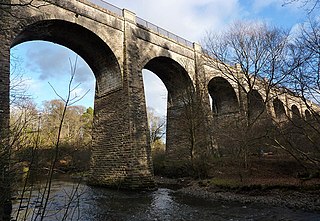
The Avon Aqueduct is a navigable aqueduct that carries the Union Canal over the River Avon, near Linlithgow, Scotland.

The Leaderfoot Viaduct, also known as the Drygrange Viaduct, is a railway viaduct over the River Tweed near Melrose in the Scottish Borders.

Yair, also known as The Yair, is an estate in the Scottish Borders. It stands by the River Tweed in the former county of Selkirkshire, 2.5 miles (4.0 km) north-west of Selkirk, and 28 miles (45 km) south of Edinburgh. The name comes from the old Scots word for a fish trap. The estate is centred on Yair House, which is protected as a category A listed building. The nearby Yair Bridge is also category A listed.
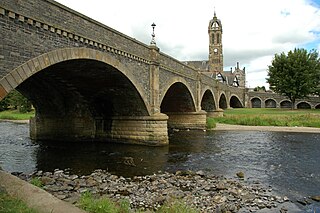
The Tweed Bridge is a stone-built road bridge of five spans over the River Tweed in Peebles, in the Scottish Borders.
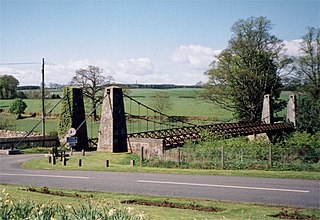
The Kalemouth Suspension Bridge is a suspension bridge at Kalemouth in the Scottish Borders area of Scotland, near the B6401. It crosses the River Teviot just above its confluence with the Kale Water, near Eckford.

The Yair Bridge or Fairnilee Bridge is a bridge across the River Tweed at Yair, near Galashiels in the Scottish Borders.
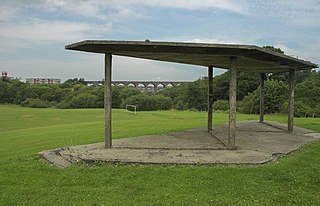
The Glaisnock Viaduct or Caponacre Viaduct is a viaduct over the Glaisnock Water, on the former Glasgow and South Western Railway. It is located in Cumnock, East Ayrshire.

The Caledonian Railway Bridge is a bridge crossing the River Clyde at Broomielaw in Scotland. It is adjacent to Glasgow Central station.

The Newbattle Viaduct, sometimes also called the Lothianbridge, Newtongrange or Dalhousie Viaduct, carries the Borders Railway, which opened in 2015, over the River South Esk near Newtongrange, Midlothian, Scotland.

The Avon Viaduct carries the railway over the River Avon at Linlithgow, West Lothian, Scotland.

The Broomhill Bridge is a wooden bridge over the River Spey.

The Drygrange Old Bridge is a disused road bridge over the River Tweed near Melrose in the Scottish Borders.

The Kelso Bridge or Rennie's Bridge is a bridge across the River Tweed at Kelso, in the Scottish Borders.
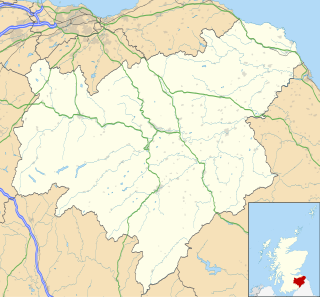
Mertoun is a parish in the south-west of the historic county of Berwickshire in the Scottish Borders area of Scotland. Together with the parish of Maxton, Roxburghshire it forms the Maxton and Mertoun Community Council area. It was included in the former Ettrick and Lauderdale District of Borders Region, by the Local Government (Scotland) Act 1973, from 1975 to 1996.



















